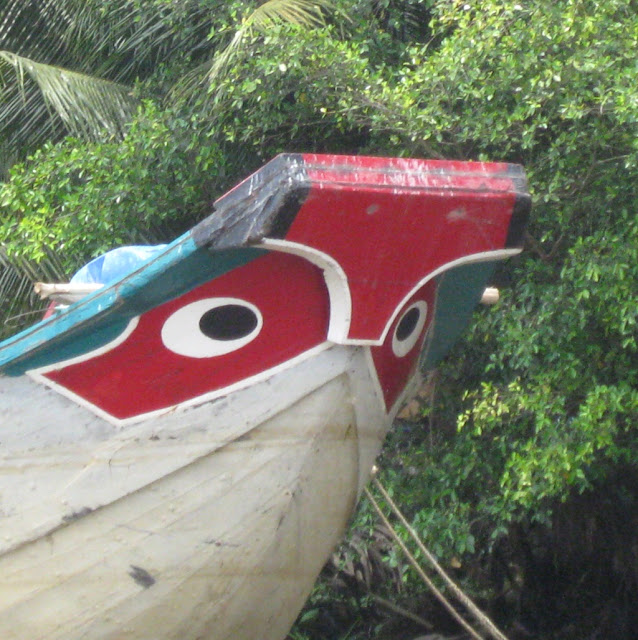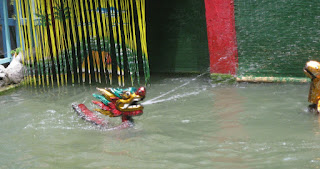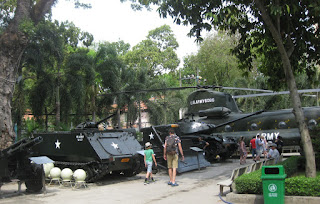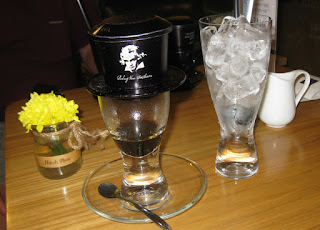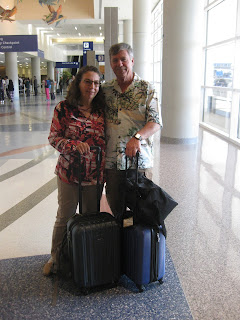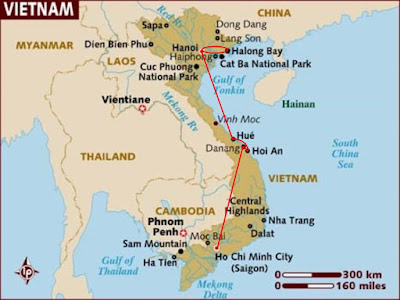 |
| just outside the central city, along the Mekong |
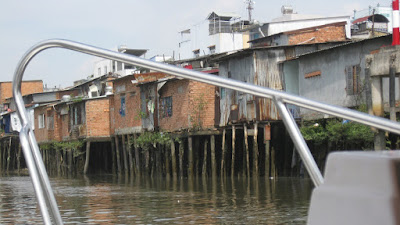 |
| houses along the Mekong River |
A commercial area was our next sight up the river. Barges bring sand and rock down the river and off-load it, then trucks come and take it for construction sites in town. We also passed a huge wholesale vegetable market. We smelled the fish sauce factory before we came to it. A lot of commerce uses the Mekong River for the transportation of goods.
After a bit, however, we did leave boat congestion and polluted water. The river water was never clear because of all the silt it carries down, but it looked better the farther we got from Ho Chi Minh City.
 |
| Mekong River, away from the city |
We stopped at a Buddhist Temple, then at a farm where we saw tapioca in various stages of growth, sugarcane fields, mango and jackfruit trees. Tapioca is grown for its roots, which are processed and dried, then sold as either tapioca flour or turned into boba, those almost gelatinous balls that can be found in some Asian drinks. In the USA, we are mostly just familar with tapioca pudding, but tapioca can be transformed into much more.
 |
| Young tapioca plants |
I'm calling it a trail, but it was actually also a road. We had to step to the side several times to let motorcycles pass. Note that it is raised above the field level as the fields flood with heavy rains frequently.
Back on our boat for more water travel before our next stop for refreshment - very fresh coconut juice. Hang said that the best coconuts to drink for their juice are those picked about four months after they form. This coconut juice was quite tasty and the coconut was obviously younger than other I have had.
We also stopped at a town market along the river. Although Phillip and I generally visit the local markets wherever we travel, several folks on our boat had not walked thru one. Hang explained the different vegetables sold in the maket and their role in Vietnamese cooking. I was drooling over all the fruit that the market sold. It is mango season now.
 |
| local market: mangos for sale |
The vendors had brought their wares to the market by boating down the various canals that feed into the river. After lunch, we headed back down the river to Ho Chi Minh City.
 |
| Mekong River during our return trip, high tide |
Hang shared with us that the Vietnamese have been painting eyes on the prow of their boats for a long time, to protect the boats from monsters and evil spirits.
According to several sources, the first king of Vietnam, in the 1st century, B.C.E., ordered that the boats be painted to protect people from sea monsters. Scholars think the sea monsters were probably crocodiles.
We saw the eyes on almost all the boats that weren't barges. Barges have flat fronts so the eyes wouldn't work to scare off the sea monsters.



